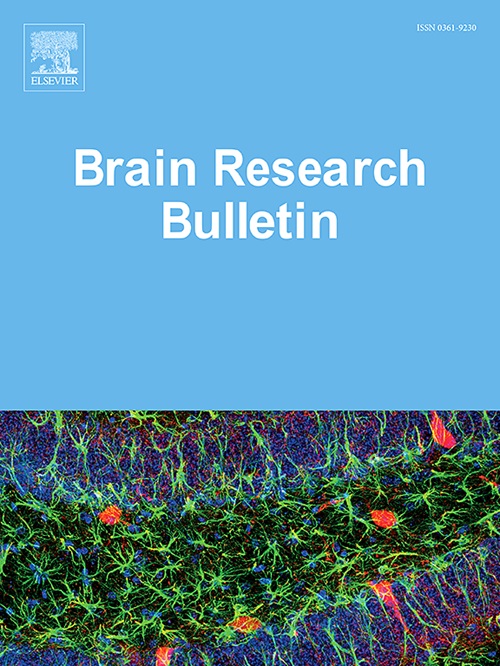New insight into the role of altered brain cholesterol metabolism in the pathogenesis of AD: A unifying cholesterol hypothesis and new therapeutic approach for AD
IF 3.5
3区 医学
Q2 NEUROSCIENCES
引用次数: 0
Abstract
The dysregulation of cholesterol metabolism homeostasis has been universally suggested in the aeotiology of Alzheimer's disease (AD). Initially, studies indicate that alteration of serum cholesterol level might contribute to AD. However, because blood-brain barrier impedes entry of plasma cholesterol, brain cells are not directly influenced by plasma cholesterol. Furthermore, mounting evidences suggest a link between alteration of brain cholesterol metabolism and AD. Interestingly, Amyloid-β proteins (Aβ) can markedly inhibit cellular cholesterol biosynthesis and lower cellular cholesterol content in cultured cells. And Aβ overproduction/overload induces a significant decrease of brain cellular cholesterol content in familial AD (FAD) animals. Importantly, mutations or polymorphisms of genes related to brain cholesterol transportation, such as ApoE4, ATP binding cassette (ABC) transporters, low-density lipoprotein receptor (LDLR) family and Niemann-Pick C disease 1 or 2 (NPC1/2), obviously lead to decreased brain cholesterol transport, resulting in brain cellular cholesterol loss, which could be tightly associated with AD pathological impairments. Additionally, accumulating data show that there are reduction of brain cholesterol biosynthesis and/or disorder of brain cholesterol trafficking in a variety of sporadic AD (SAD) animals and patients. Collectively, compelling evidences indicate that FAD and SAD could share one common and overlapping neurochemical mechanism: brain neuronal/cellular cholesterol deficiency. Therefore, accumulated evidences strongly support a novel hypothesis that deficiency of brain cholesterol contributes to the onset and progression of AD. This review highlights the pivotal role of brain cholesterol deficiency in the pathogenesis of AD. The hypothesis offers valuable insights for the future development of AD treatment.
求助全文
约1分钟内获得全文
求助全文
来源期刊

Brain Research Bulletin
医学-神经科学
CiteScore
6.90
自引率
2.60%
发文量
253
审稿时长
67 days
期刊介绍:
The Brain Research Bulletin (BRB) aims to publish novel work that advances our knowledge of molecular and cellular mechanisms that underlie neural network properties associated with behavior, cognition and other brain functions during neurodevelopment and in the adult. Although clinical research is out of the Journal''s scope, the BRB also aims to publish translation research that provides insight into biological mechanisms and processes associated with neurodegeneration mechanisms, neurological diseases and neuropsychiatric disorders. The Journal is especially interested in research using novel methodologies, such as optogenetics, multielectrode array recordings and life imaging in wild-type and genetically-modified animal models, with the goal to advance our understanding of how neurons, glia and networks function in vivo.
 求助内容:
求助内容: 应助结果提醒方式:
应助结果提醒方式:


